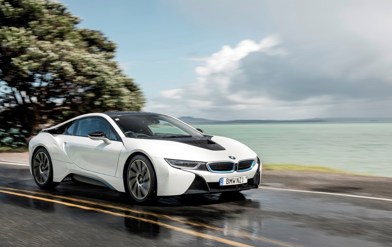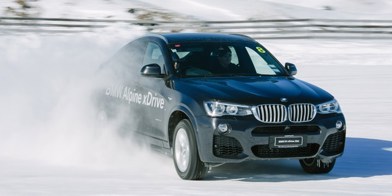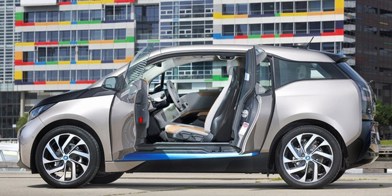Mercedes-Benz GLB hasn’t been with us for that long. Launching just before Covid hit, the SUV created a somewhat unique selling point, being a relatively compact seven-seat SUV.
And now it’s expanded its range and joined the EQ ranks, as the EQB, with full electric BEV motivation, joining the 2020 NZ Car of the Year EQC, the EQA and the just-launched Mercedes-AMG EQS 53 and EQV van.
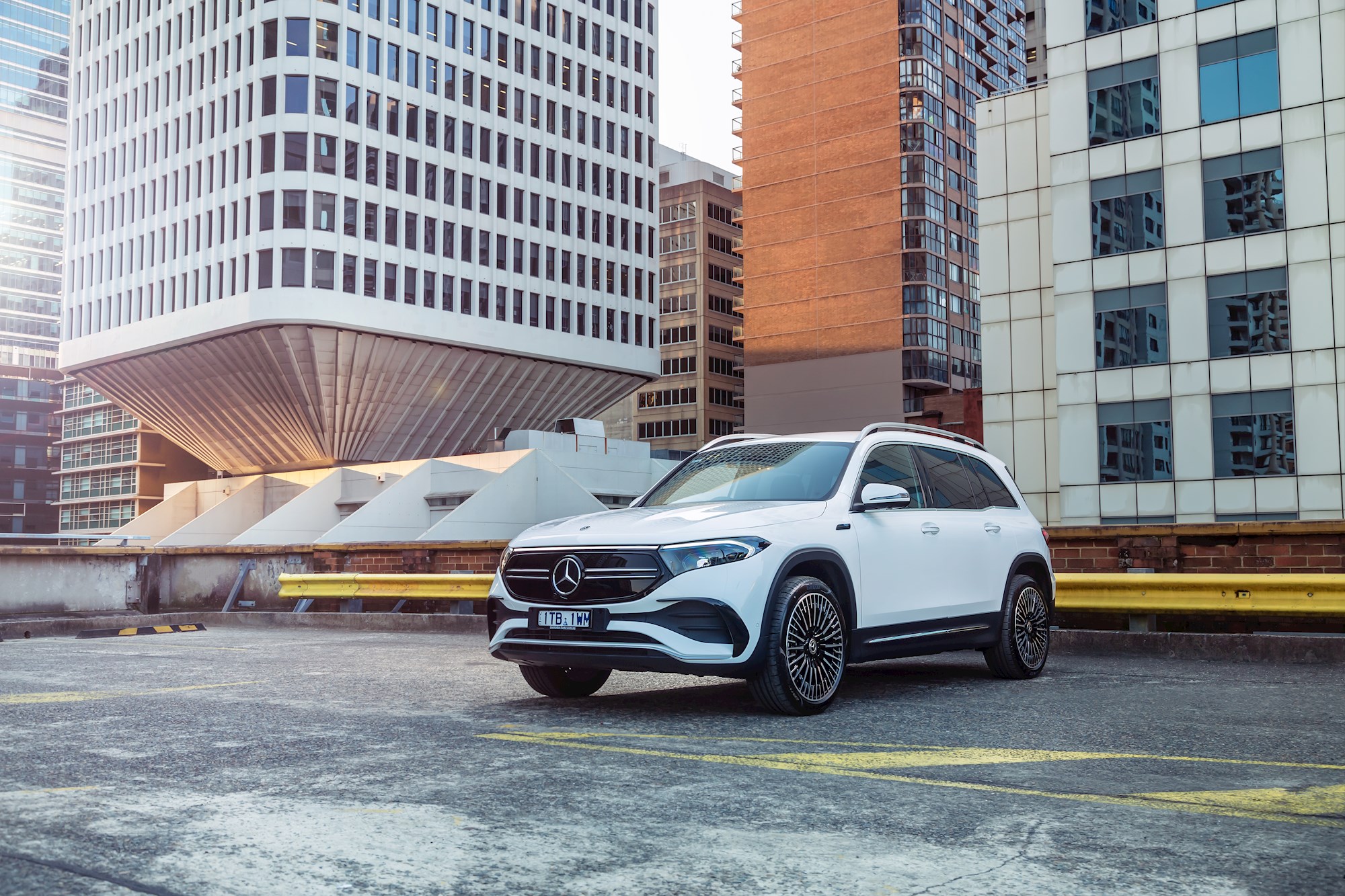
But the new EQB is more than just a GLB with electric drivetrain. It’s also less.
Fitting somewhere in between EQA and GLC and dimensionally closer to EQA with more headroom, the new EQB is available in two key specs: the 250 front-drive model, and a 4Matic all-wheel drive 350 version. But the seven-seat USP now becomes an option, and only on the on the single-motor 250. We could blame the third row’s seat space being consumed by componentry for the second motor mounted in the rear, but Mercedes says this isn’t the case, with Euro 350 models being offered as a seven-seater – just that the market didn’t suggest it was needed locally.
Likewise, towing is available in overseas markets but not offered locally due to low demand.
The 250 five-seater, therefore, arrives just under the $100k barrier in either Progression or Electric Art trim levels. Curiously, the EQB may be mechanically like an electric GLB, but it’s electrically more EQA, with the EQA’s 66.5kWh battery and running gear underneath, same power, 10Nm more, even offering the same 0-100km/h time, but with slightly reduced range (down from EQA’s 410km).
The GLB’s unique selling point, the third row, comes at a $2900 option with EQB 250, with two Isofix mounts, two USBs points and an easy-access function for the sliding second row.
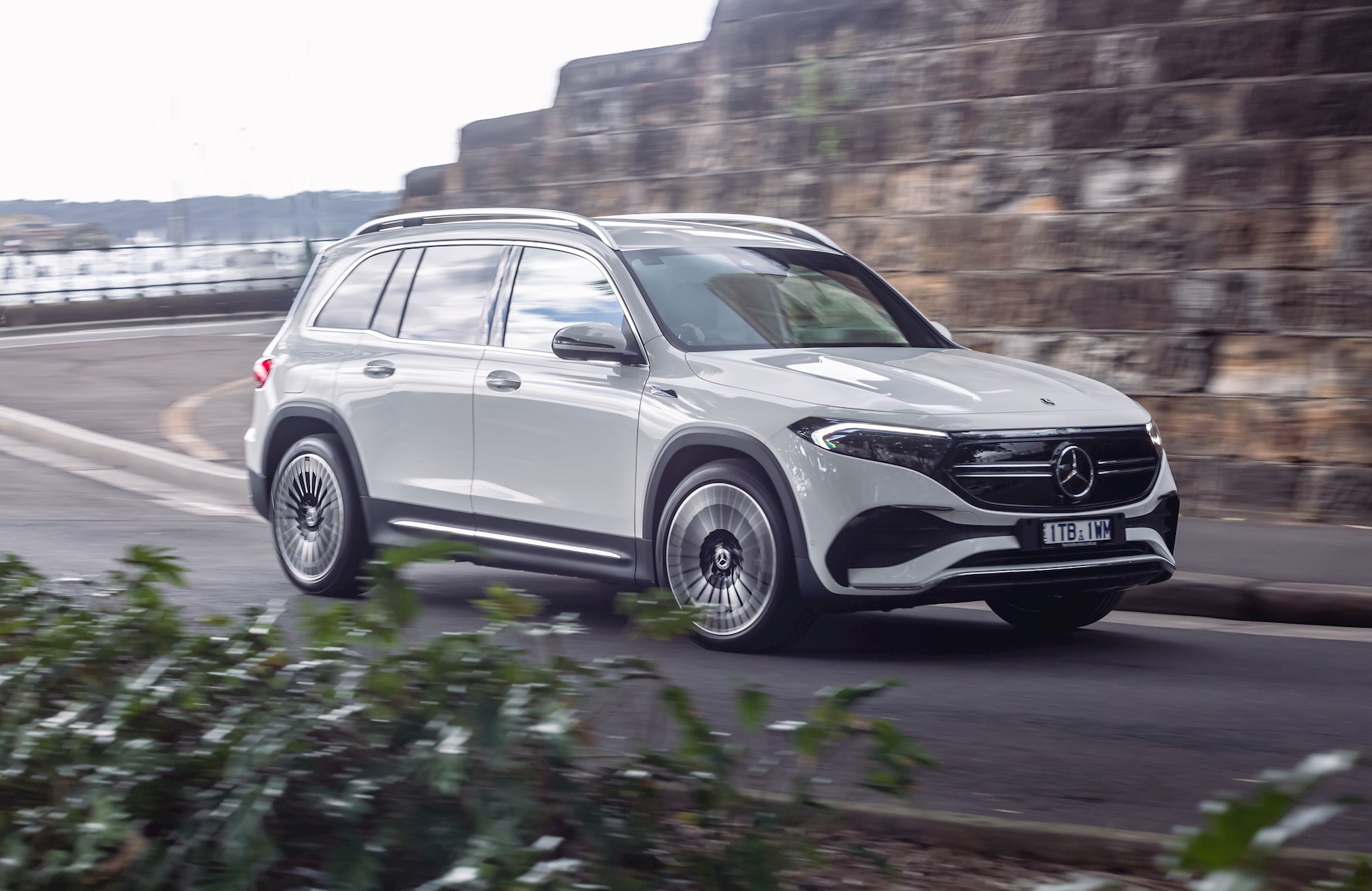
A $10k step up is the five-seat EQB 350, with more power and torque and 0-100 in the sixes, but reduced range. Number crunchers can skip to the spec panel at the end for the specifics, but the 350 also brings with it a range of AMG Line extras including sports seats, Nappa wheel, AMG floor mats, panoramic sunroof, 20-inch AMG alloys and the AMG bodykit with more scoopy and venty bumpers.
Both models offer the same 100kW peak charging rate, to take advantage of the DC fast chargers and add around 100km of range in ten minutes. Both models also include two types of chargers as standard, including the three-pin portable wall socket, and a Type 2 to Type 2 AC public charging cable. A Mercedes-Benz wallbox is around $2400 plus installation.
On the practical side, the boot space offers a range of configurations, with up to 1710 litres of space with all seats folded, and for safety, there’s an external warning sound emitted externally, when under 20km/h to warn pedestrians.
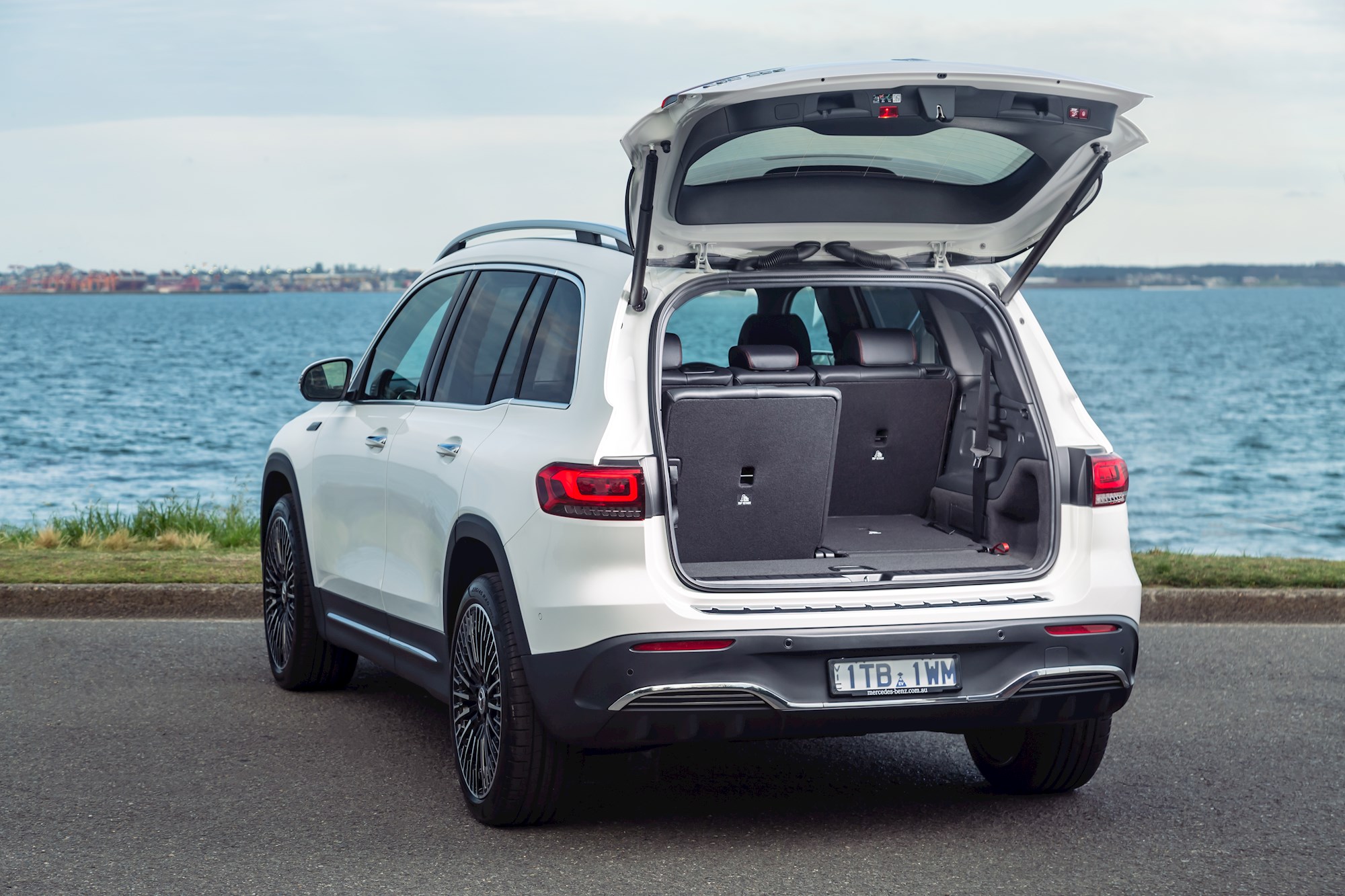
Driving EQB is an unsurprisingly similar experience somewhere between EQA and EQC 400, with the 250 offering a very similar package to EQA, while the EQB 350 is closer to EQC. The dual 10.5-inch MBUX screens, wireless charging and CarPlay, 10-speaker audio and rainbow of ambient lighting colours all add to the premium and personal feel, while the paddle shifters quickly get used for choosing and using the best driving mode, between D, D+ and D-, the latter basically a one-pedal driving mode with maximum regeneration.
Keyless go and access make life a little easier, and so do the options packs: $4300 for the AMG Line pack for the 250 model, while $2500 buys the Innovations Pack, including Head-Up Display and Augmented Reality on the navigation screen; S-Class tech dripping down the Mercedes range. It also includes gesture controls, such as the driver reaching across to the passenger seat at night will automatically illuminate the map light.
Notable by their absence on these first cars, however, are the electric seat switches on the door, an apparent casualty of the semi-conductor chip shortages.
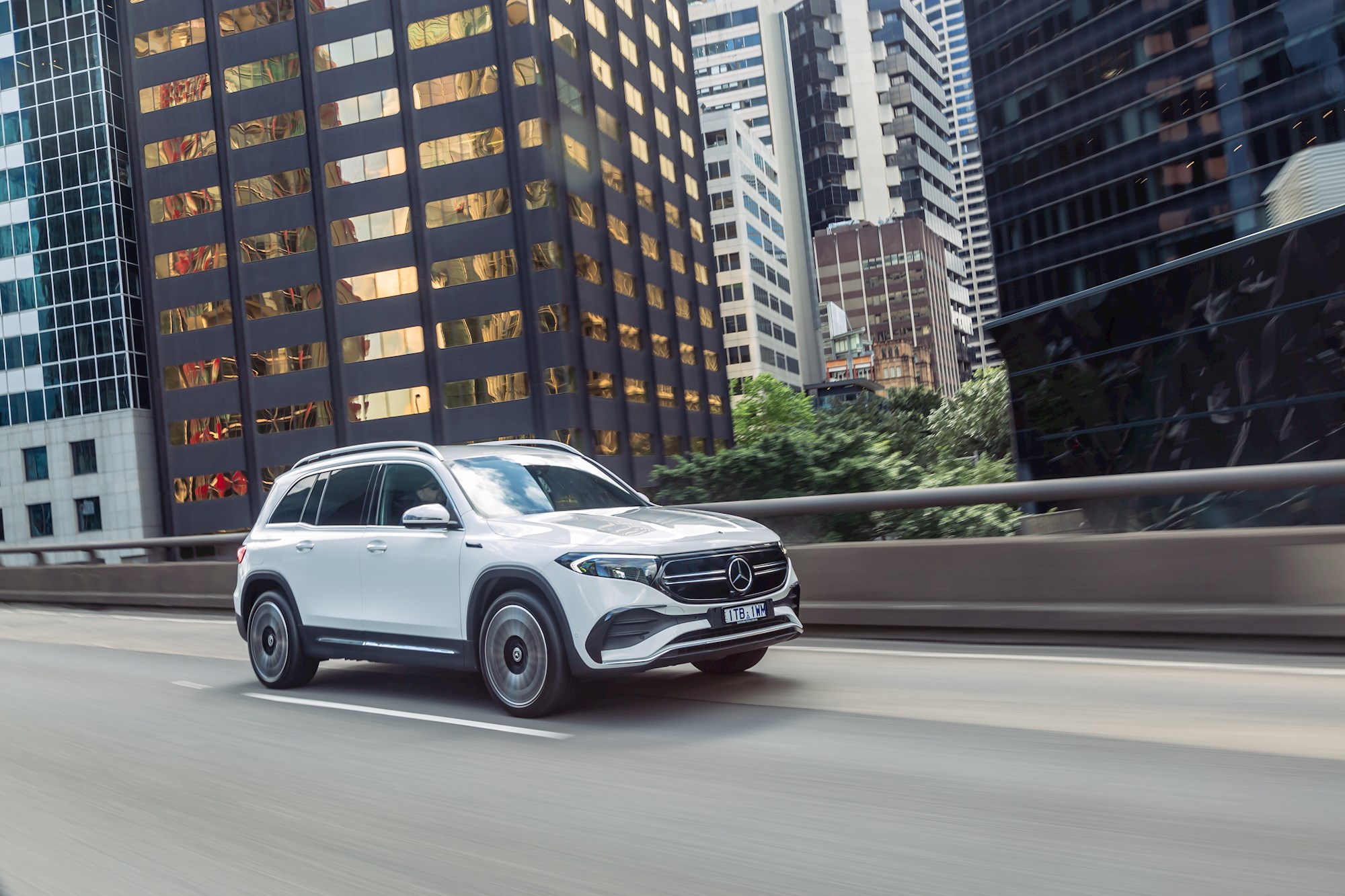
To drive, somewhat unsurprisingly, the EQB is a mix of EQA and EQC, taking the best bits from each. It’s faster and better sorted than the slightly underwhelming EQA, but offers the large-car ride and feel of the EQC, with the immediate response and power somewhere in between, which isn’t a bad thing given the almost more than needed power and speed of the EQC. While range is reduced 10 percent, the EQB offers a similar feel and experience to the EQC, at a lower price point, with the added practicality of seven seats.
The front-drive 250 model does get the odd squirm and slip of tyres from roundabouts or wet roads, but is composed and feels fast enough for the family. The 350’s 4Matic eliminates any wheelspin, and serves up a decent dollop of performance, without being too fast with that annoyingly-EV trait of instant acceleration throwing passengers back in their seats to the point of complaint.
With 330 sales of EQ models in New Zealand after the first nine-months of 2022, representing EQ four models, that signals a 100 percent increase in model range and also sales over the past year
alone. With EQE and EQS SUV and AMG variants imminent, the transitioning period from ICE to BEV is strong with Mercedes-Benz, expanding the choices, without restricting the options.
And the EQB is another brick in that future wall.
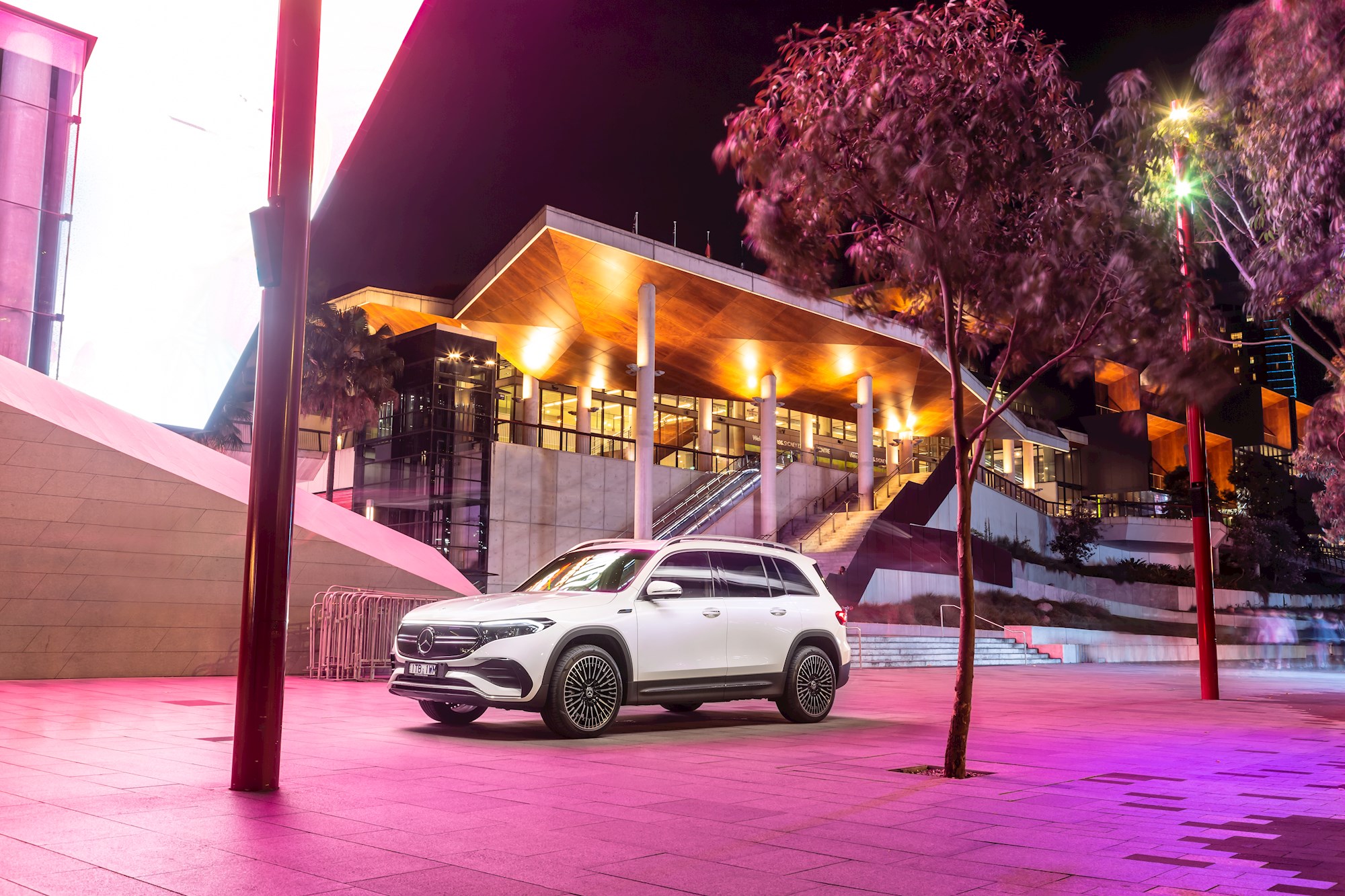
MERCEDES-BENZ EQB 250/350 4MATIC
ENGINE: Single motor FWD/twin motor AWD
GEARBOX: Single speed BATTERY: 66.5kWh, max 100kW charge rate
POWER: 140/215kW, 385/520Nm
0-100KM/H: 8.9/6.2 secs
ECONOMY: 20.4/21.0kWh (WLTP)
RANGE: 371/360km (WLTP)
PRICE: $99,900/$109,900



















